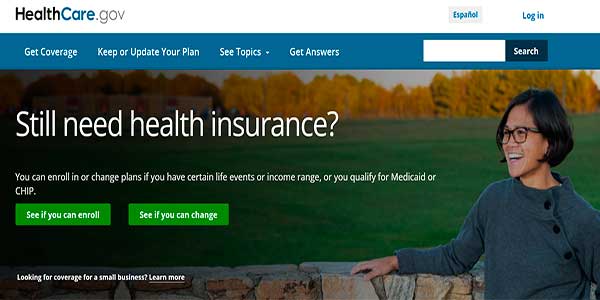Low-Income Special Enrollment
A Special Enrollment Period (SEP) just became available that will help low-income families obtain health insurance.

Additional enrollment opportunities
In September 2021, a Special Enrollment Period went into effect for low-income households. It was not easily available because prior to March 21, 2022 a person had to call the marketplace and provide information. But from March 21st this SEP became available online.
Other SEP’s exist but they are limited to special life events and have time limits.
The new special SEP is tied to income and is available year-round.
• It should be noted that this SEP may not be permanent. A lot depends upon Congress. The Build Back Better Act that passed the House but stalled out in the Senate called for the funding for this SEP to be extended through 2025. There is a hope that some parts of the Build Back Better Act will be passed, including funding for this SEP.
♦ Among those currently uninsured, an estimated 1.3 million could be eligible for this new low-income enrollment option.
Under this new SEP, applicants can enroll in a health plan through the federal marketplace at any time during the year. And coverage will take effect the first of the following month.
• State-run exchanges have the option to set a deadline to complete the application in order to have coverage start the first of the month.
The new policy for low-income special enrollment will apply to the 30 states using the federal health exchange or marketplace.
State-run exchanges are not required to offer this SEP. There are 18 state-run exchanges.
State-run exchanges that are offering this SEP are: Colorado, Maine, Pennsylvania, New Jersey, California, and Rhode Island.
Several other state-run exchanges have no need for this SEP, because they have other programs with year-round availability. This includes:
• New York and Minnesota, both of which have programs that cover people with income up to 200% of FPL.
• Massachusetts offers Connector Care to people with incomes up to 300% of FPL (enrollment is open year-round to people who are newly eligible or who have not been covered under the program in the past).
• DC offers Medicaid to adults with income up to 215% of the poverty level.
To be eligible for this low-income SEP, an applicant’s household income cannot exceed 150% of the federal poverty level (FPL).
• For a single person, 150% of the poverty level amounts to an income of no more than $19,320.
• For a household of four, it’s $39,750.
Federal poverty levels are higher in Alaska and Hawaii.
• You have to be eligible for premium tax credits in order to take advantage of this SEP.
This SEP is only available on-exchange, since premium tax credits aren’t available off exchange.
To get on-exchange coverage, you can enroll directly through the exchange or marketplace.
• There is also a new option called Enhanced Direct Enrollment (EDE). Enhanced direct enrollment (EDE) is a new pathway for consumers to enroll in health insurance coverage through the Federally-facilitated Exchange.
CMS has partnered with the private sector to provide a more user-friendly enrollment experience. They hope.
The list of third-party entities approved to use an EDE pathway is provided at this link.
Brokers May Not Be Helpful
A number of insurers have informed brokers that they will stop paying commissions to brokers who enroll new people in coverage starting April 1st.
The insurance industry’s trade group opposes allowing people to sign up outside of the year-end open enrollment period. They argue that sicker people will wait to enroll until that last minute and thereby drive-up costs.
• Brokers are now asking, “Why sell something I don’t get paid for?”
Many people take advantage of federal and state marketplaces. But experts say that a large number of people find the process of deciding a health plan too much to handle and would prefer to use a broker.
This is especially true for low-income Americans, young people who are less experienced with health insurance, and people who are not proficient in the English language.
The concern now is that brokers will have a higher tendency to steer consumers to plans that pay them a commission but may not be the best at meeting the needs of the customer.
Eligibility
In states where Medicaid is available adults in most cases are covered up to 138% of the federal poverty level. In these states, this low-income SEP would only be available for people with incomes over 138% but less than 150%.
In states where Medicaid has not been expanded, this SEP is available to households with incomes between 100% and 150% of the federal poverty level. Unfortunately, for households with incomes less than 100% this SEP does not help those people.
Recent immigrants may qualify for this SEP with incomes between 0% and 150% of the federal poverty level, provide they do not qualify for Medicaid.

